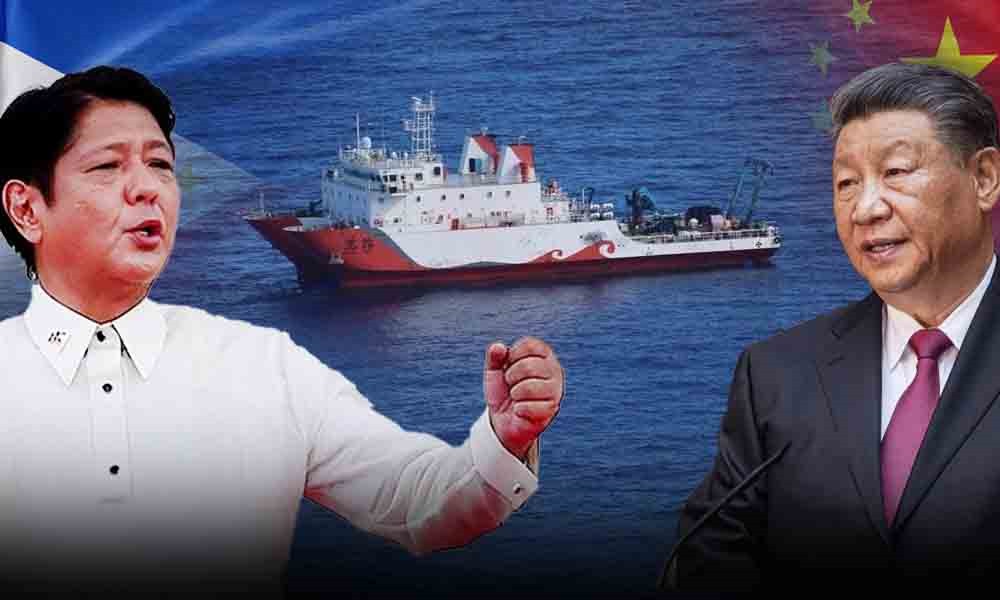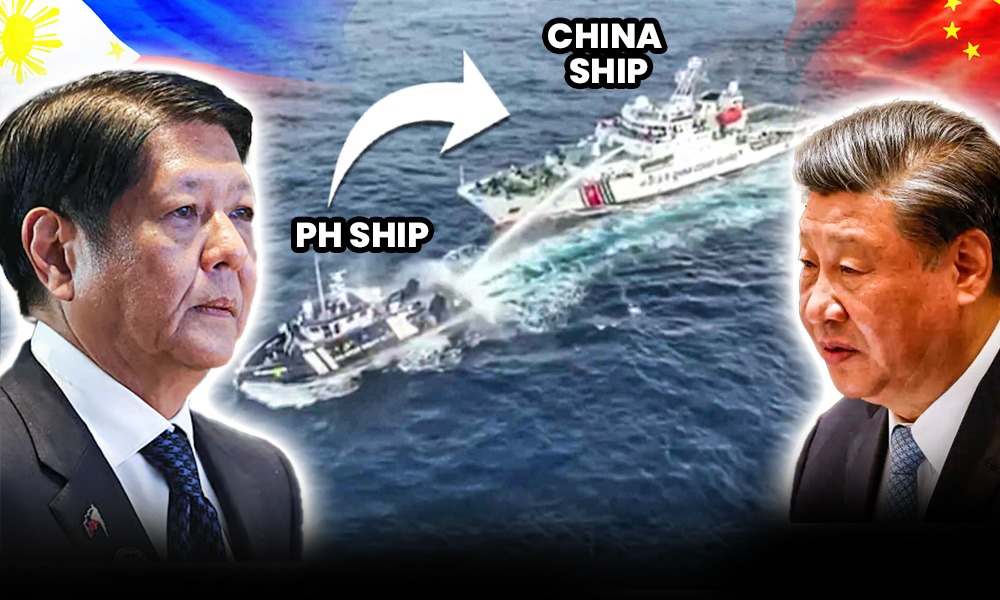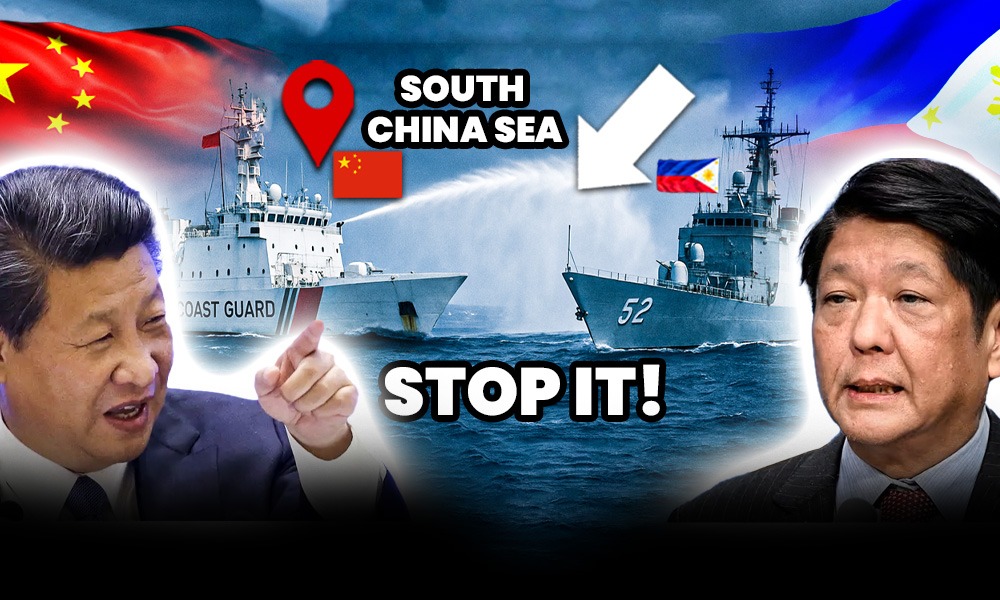In 1521, the famed Portuguese explorer Ferdinand Magellan arrived in the Philippine archipelago, unknowingly charting a course through waters that, five centuries later, would become one of Asia’s most volatile maritime flashpoints. The West Philippine Sea, a crucial artery of global trade and a rich source of marine and energy resources, now stands at the heart of a heated territorial struggle, particularly between the Philippines and an increasingly assertive China. Over the years, Chinese vessels have steadily intensified their presence within the Philippines’ Exclusive Economic Zone (EEZ), often shadowing, harassing, or blocking Filipino ships. Recently, tensions flared anew as Commodore Jay Tarriela of the Philippine Coast Guard (PCG) confirmed multiple confrontations, spotlighting incidents involving the BRP Teresa Magbanua and Philippine Navy operations against unauthorized Chinese research vessels. This development signals not just a defense of territorial integrity, but a broader assertion of Philippine sovereignty in its own maritime backyard.
The BRP Teresa Magbanua Incident
On the evening of May 5, 2025, tensions simmered once again in the West Philippine Sea as the Philippine Coast Guard (PCG) vessel BRP Teresa Magbanua executed a high-stakes escort operation involving the Chinese research vessel Tan Suo 3. Commodore Jay Tarriela, PCG spokesperson, confirmed that the BRP Teresa Magbanua had successfully shadowed and escorted the Chinese ship away from waters located well within the Philippines’ Exclusive Economic Zone (EEZ). The incident occurred near the western seaboard of Palawan, an area roughly 170 nautical miles off the Philippine coast and clearly within the 200-nautical-mile EEZ outlined under the United Nations Convention on the Law of the Sea (UNCLOS), to which both the Philippines and China are signatories. The Tan Suo 3, officially designated as a “research vessel,” raised alarms due to its uncoordinated and unpermitted activity in Philippine waters, actions the PCG interpreted as a potential cover for hydrographic surveys or marine data collection, activities that require host nation approval under international law.
The Philippine government has grown increasingly wary of such incursions, particularly following a 2023 report by the Asia Maritime Transparency Initiative (AMTI), which noted that Chinese maritime presence in disputed areas increased by 30% over the previous year, often involving disguised research ships and civilian militias. Interestingly, initial news headlines misattributed the interception to the Philippine Navy, highlighting a common confusion that reflects the multi-agency defense posture now employed in these contested waters. Commodore Tarriela’s clarification that it was in fact a PCG operation, led by the BRP Teresa Magbanua, a 97-meter multi-role response vessel donated by Japan in 2022, emphasizes the growing maritime law enforcement role of the Coast Guard in addition to the military. This incident not only highlights the volatile nature of maritime disputes but also reinforces the Philippines’ resolve to assert control over its legally defined marine territory without resorting to escalatory action.
Analysis of Other Recent Incidents Involving the Philippine Navy
In a separate yet equally critical development, the Philippine Navy reportedly forced out a Chinese vessel conducting questionable activities within the Philippines’ EEZ, a move that signals a firmer and more tactical shift in Manila’s maritime enforcement approach. While official reports remain sparse on the exact classification of the Chinese ship, analysts believe it was likely either a maritime militia vessel or a civilian ship suspected of dual-use intelligence operations. These so-called “gray zone” tactics, non-military actions designed to assert territorial claims without triggering direct conflict—have become a common feature of China’s maritime strategy. The Navy’s assertive move to expel the vessel highlights the Philippines’ growing intolerance for unauthorized foreign presence, especially as more than 400 Chinese vessels were tracked loitering near key Philippine features like Ayungin Shoal and Sabina Shoal in late 2024, according to the National Task Force for the West Philippine Sea. Such actions also follow a series of policy shifts by the Marcos administration that empower the armed forces to take more direct roles in maritime defense, reinforcing Manila’s commitment to both sovereignty and regional stability.
Compounding the rising friction is the suspected halting of a “secret research mission” by another Chinese vessel, intercepted by the Philippine Navy within EEZ boundaries. This incident, although classified in terms of operational details, has ignited widespread speculation among maritime security experts. Secretive Chinese marine research missions often involve mapping the seabed, surveying undersea topography, or conducting resource assessments, activities that have direct strategic and military value. These missions, if left unchecked, could provide China with hydrographic data that might later support submarine operations or facilitate construction on disputed features. Given the West Philippine Sea’s role as a critical node in undersea communication cables and energy exploration zones, the interception of such a clandestine activity suggests not just proactive defense, but a deepening sense of urgency within the Philippine defense apparatus to secure underwater infrastructure and prevent data theft. Such incidents also highlight the thin line between scientific exploration and covert surveillance, a tension that continues to test regional security frameworks.
Perhaps most striking is the Philippine Navy’s exposure of an “illegal operation” reportedly conducted by Chinese entities in early May. Though details remain classified, initial statements from defense officials suggest that the operation involved either unlicensed resource extraction, possibly involving marine life or mineral deposits, or the unauthorized deployment of equipment within Philippine waters. These operations, if proven, would directly violate both UNCLOS provisions and the 2016 arbitral ruling that invalidated China’s sweeping “nine-dash line” claims. The rapid response by Philippine forces not only disrupted the operation but also sent a powerful signal of enforcement capability and legal resolve. This marks a significant departure from previous years, when incidents were often documented but rarely confronted in real-time. Today, equipped with stronger maritime domain awareness and backed by defense cooperation with allies like the U.S., Japan, and Australia, the Philippines appears increasingly prepared to expose and counter covert incursions with both diplomatic candor and operational precision.
Described dramatically in the media as the “West Philippine Sea Showdown,” the most recent confrontation between Philippine forces and a Chinese vessel marks a symbolic and tactical escalation in the maritime standoff. This incident involved Philippine military or coast guard assets directly compelling a Chinese ship to vacate waters within the Philippines’ Exclusive Economic Zone (EEZ), an act that, while rooted in maritime law, carries high diplomatic and strategic weight. While specific technical details remain limited, the “showdown” label appears warranted due to several key factors: the tense verbal exchanges reportedly transmitted over marine VHF radio, the proximity of vessels during the standoff, and the visible resistance of the Chinese ship to comply with initial warnings. Sources suggest the encounter occurred near Second Thomas Shoal (Ayungin Shoal), a flashpoint regularly patrolled by both Philippine and Chinese vessels, and home to the grounded Philippine Navy ship BRP Sierra Madre, which serves as an outpost of sovereignty.
US & Philippine Marines Unveil MADIS Air Destroyer Weapon at Balikatan 25
What elevates this incident from a routine maritime shadowing into a “showdown” is the calculated firmness of the Philippine response, which not only included direct confrontation but also real-time documentation and public exposure, breaking a longstanding pattern of quiet diplomacy in favor of transparency and assertiveness. This mirrors the broader shift in Manila’s maritime doctrine, which now blends legal invocation, international alliance-building, and operational resistance to defend its rights. With China’s presence in contested waters increasing by over 60% in the last five years, according to regional think tanks, the Philippines is increasingly finding itself in the position of having to enforce its sovereignty, not just declare it. The May encounter, then, stands not only as a tactical victory but as a highly visible assertion of Philippine agency in one of the world’s most hotly contested maritime zones.
Implications of China’s Actions and the Philippine Response
The recent surge in Chinese maritime activities within the Philippines’ Exclusive Economic Zone (EEZ), including unauthorized research missions, illegal operations, and persistent presence of state-linked vessels, poses a direct and sustained challenge to Philippine sovereignty and international maritime law. China’s strategic incursions, often masked as civilian or scientific endeavors, raise serious concerns over the intent to assert de facto control in disputed waters, undermining the 2016 arbitral ruling that dismissed Beijing’s sweeping “nine-dash line” claim. In stark contrast, the Philippine Coast Guard and Navy have evolved from passive observers to active enforcers, visibly patrolling, confronting, and even escorting Chinese ships out of their EEZ. The BRP Teresa Magbanua’s intervention and the Navy’s exposure of illegal and covert Chinese operations are emblematic of a broader shift toward maritime assertiveness under President Ferdinand Marcos Jr.’s administration.
However, the increasing frequency, complexity, and intensity of these confrontations, now occurring on almost a weekly basis, signal a worrisome escalation. According to defense analysts, Chinese vessel presence in the West Philippine Sea has increased by over 60% since 2020, with hotspots like Ayungin Shoal and Sabina Shoal witnessing the majority of standoffs. This rising tension elevates the risk of miscalculation, especially as radio challenges, ship shadowing, and close-quarter maneuvering become routine. Beyond the tactical arena, these incidents carry significant diplomatic implications. The Philippines has been actively documenting and publicizing these maritime violations to galvanize international support and reaffirm its legal maritime entitlements. These actions have already drawn increased attention and cooperation from allies such as the United States, Japan, and Australia, potentially shifting the regional balance and further internationalizing the West Philippine Sea conflict. Ultimately, the current trajectory could either push toward a new framework of deterrence or deepen the spiral of maritime hostility in Southeast Asia’s most volatile flashpoint.
Trump Sparks Global Trade War with Sweeping Tariffs on Canada, China, and Mexico
End Note
The recent assertive actions taken by the BRP Teresa Magbanua and the Philippine Navy reflect more than isolated responses, they signify a resolute and evolving national stance in defense of maritime sovereignty. From escorting unauthorized Chinese research vessels out of the EEZ to exposing and halting suspected clandestine operations, these interventions underscore the Philippines’ growing capacity and willingness to enforce its rights under international law. Such efforts are not just tactical victories, but powerful assertions of national dignity in the face of persistent and complex challenges. As incursions increase and tensions rise, Manila’s consistent actions reinforce its unwavering commitment to safeguard its territorial integrity, particularly in the resource-rich and strategically vital waters of the West Philippine Sea.
Yet these maritime confrontations reverberate far beyond Philippine shores. They illuminate a shifting power dynamic in the Indo-Pacific, where smaller coastal states are no longer silent actors but proactive defenders of international norms. The Philippines’ stance contributes to a broader regional pushback against coercive behavior and reinforces the imperative for peaceful, rules-based dispute resolution. As the eyes of the world remain fixed on this maritime flashpoint, the defense of Philippine sovereignty emerges not only as a national priority, but as a cornerstone of regional peace, stability, and lawful maritime order.



